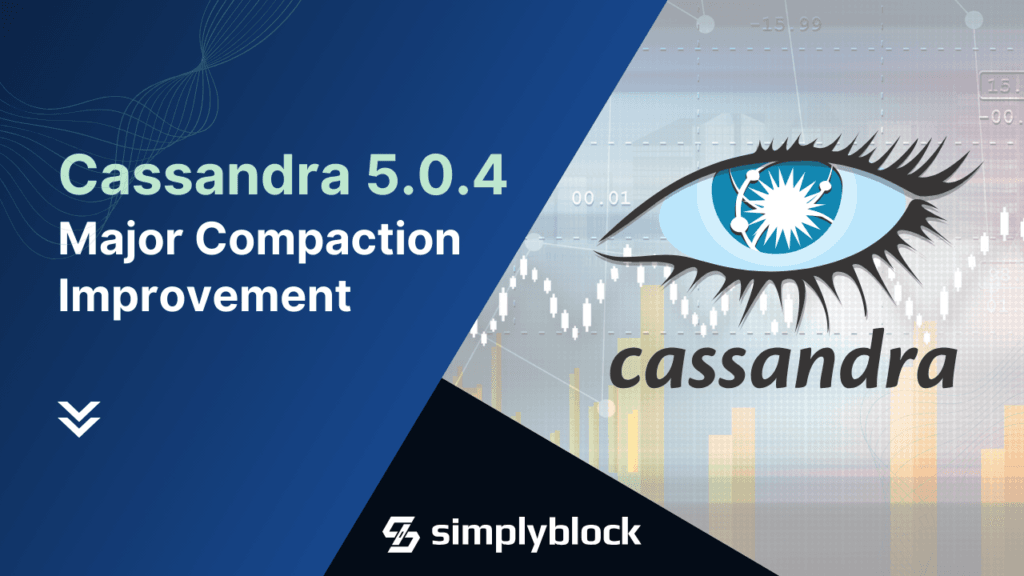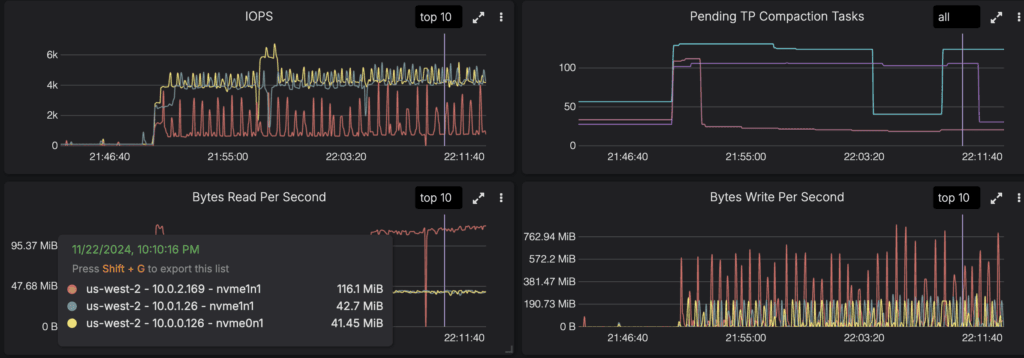
On April 10, 2025, the Apache Software Foundation released version 5.0.4 of Apache Cassandra, bringing significant performance optimizations for all users—but especially for those relying on remotely attached storage like Amazon EBS. The standout feature in this release is an overhaul of the compaction algorithm aimed at slashing IOPS usage while increasing overall throughput.
Improved Compaction in Apache Cassandra 5.0.4
The new compaction logic, developed to alleviate pressure on I/O subsystems, marks a turning point for Cassandra’s performance in private and public cloud environments. As highlighted in AWS’s own blog, IOPS spikes caused by compaction have long been a bottleneck. Cassandra 5.0.4 tackles that head-on, reducing the frequency and intensity of these spikes, improving responsiveness across a broad range of deployments.
This change is more than just a benefit for cloud-native deployments. It’s good news for any Apache Cassandra user with storage not directly attached to compute—where throughput ceilings and latency fluctuations often result in operational headaches. While Cassandra’s new efficiencies lower the strain, storage demands aren’t going away. And that’s where infrastructure players like simplyblock come into play.Jon Haddad, a technical consultant and previous employee of Apple and Netflix, provided extensive benchmark runs of the new compaction algorithm compared to older versions. His benchmarks show up to 3x more throughput usage (meaning faster compaction) while considerably using less IOPS.

That isn’t the only improvement, though. As a side effect of the compaction change, the time spent waiting for pread decreased by over 100%. This should improve Apache Cassandra’s read latency and general read throughput.
Overall, this version provides an incredible improvement to anyone using remotely attached storage, which is commonly limited on IOPS, either by the network or the underlying backend storage. I would highly recommend upgrading to Apache Cassandra 5.0.4 as soon as possible.
Obviously, the patched compaction will also be available in Apache Cassandra 5.1 when it’s released. Actually, it was merged into the 5.1 branch before it was backported to 5.0.4.
Simplyblock let’s You further improve Throughput and IOPS
Cassandra’s new compaction model is a major leap forward, but it doesn’t negate the need for high-performance, scalable storage—especially for large enterprises running Cassandra at scale. Whether it’s Uber’s Michelangelo ML pipelines, Netflix’s metadata indexing, or Apple’s global-scale clusters, performance boundaries are constantly being pushed.
Simplyblock is uniquely positioned to handle the evolving needs of Cassandra clusters. Unlike traditional block storage, it’s designed to deliver multi-million IOPS and ultra-low latency over remote NVMe devices—meaning Cassandra workloads can operate at peak performance without being shackled by the IOPS limitations typical of hyperscaler offerings.
🚀 Scaling Compaction and Throughput
Even with improved compaction, IOPS-intensive workloads don’t vanish. Writes, reads, and flushes still demand strong throughput—especially under load. Simplyblock’s architecture ensures these tasks have ample IOPS headroom, not just surviving spikes but smoothing them out.
📉 Storage Footprint Reduction
Cassandra’s default replication model triples (or more) the required disk space. With simplyblock’s multi-attach and erasure coding, multiple Cassandra nodes can share the same data volume with parity-based redundancy. This reduces space usage without compromising durability.
🧠 Latency-Sensitive Workloads
Use cases like fraud detection or financial transaction processing require real-time decisions—often within a few milliseconds. Simplyblock supports hyper-converged setups, allowing storage to be co-located with compute for ultra-low-latency access while still benefiting from the resilience of a disaggregated backend.
🧪 Instant Clones for Dev and QA
Cloning Cassandra clusters for testing traditionally requires heavy lifting—copying SSTables, restoring snapshots, or bootstrapping new nodes. Simplyblock’s copy-on-write design enables zero-copy cluster cloning, drastically accelerating development cycles.
💾 Snapshots and Backup Without the Hit
While Cassandra offers manual and incremental backup tools, Simplyblock adds the power of instant snapshots that don’t affect performance. These snapshots can be stored locally or offloaded to S3, supporting compliance and disaster recovery strategies with minimal operational cost.
Looking Ahead: Cassandra’s Storage Evolution
Cassandra 5.0.4 highlights the importance of IOPS efficiency, but it also underscores a broader truth: modern distributed databases need storage architectures as scalable as their software layers. Whether you’re running Cassandra on Kubernetes with dynamic workloads or managing petabyte-scale deployments across geographies, traditional storage stacks will struggle to keep pace.
By separating compute from storage, offering built-in tiering, and supporting massive scalability with minimal management overhead, Simplyblock complements Cassandra’s strengths, which are now enhanced further in 5.0.4.
The release is a reminder for developers, operators, and architects running Apache Cassandra at scale that storage matters. In the era of disaggregated infrastructure, smart storage is more vital than ever.
📎 Read the full Apache Cassandra 5.0.4 compaction discussion and benchmarks on Jira
📎 Read the full Apache Cassandra 5.0.4 release notes


